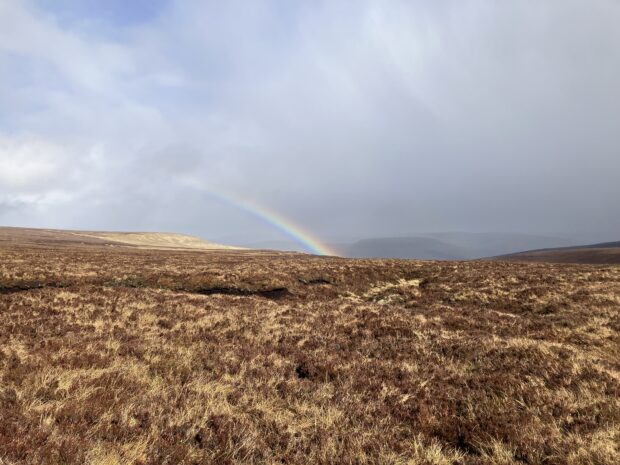
Happy International Bog Day!
It’s finally here! International Bog Day on Sunday 28th July, is essentially Christmas for the Environment Agency’s National Peatlands team. It highlights the international importance of bogs, fens, swamps and marshes and in fact anywhere with peat.
The water environment is integral to healthy bogs and peatlands, and the water environment benefits from resilient and functioning peatlands in turn.
Peatlands cover 3% of the world’s surface, holding nearly 30% of soil carbon. Keeping carbon locked away requires wet soils, which also deliver a wealth of “ecosystem services” including clean water, flood protection and sustainable food production. About 70% of drinking water in the UK comes from peat dominated landscapes, however, an estimated 80% of peatlands are degraded (damaged) or modified (changed for agricultural needs).
But what is a bog?
Bogs are peatlands – carbon capturing, water filtering, flood alleviating, biodiversity powerhouses. Formed by the accumulation of partly decomposed vegetation in waterlogged, partially anaerobic conditions. 1 metre of peat takes 1,000 years to build (1mm per year).
Peatlands generally come in 3 broad types:
- Blanket bog – typically in the uplands, fed by rainfall. Nutrient poor and acidic.
- Raised bog – localised domes, common in lowland environments. Rain fed, nutrient poor and acidic.
- Fen – fed by rain and groundwater sources, so differing pH levels from base rich to base poor.
The term ‘Wasted Peat’ describes shallow peat that has been degraded, usually through drainage and cultivation. Degraded peatlands lose material via wind and water erosion, reducing the benefits peatlands offer to the water environment.
Peatlands are important for many reasons:

Peatlands require high water-tables, with water sitting closely below the surface of the ground. We often refer to healthy peatlands as being ‘hydrologically intact’, with no excessive water loss from the site.
Often this isn’t the case, so repairing and restoring peatlands is needed. Lowland agricultural peat (LAP) landscapes are entwined with complex drainage to make the land productive for cropping. Whilst upland peatlands have been drained for grazing, afforestation, or to encourage heather growth for grouse shooting.
Our role in peat
The Environment Agency National Peatland team work hard to promote consistent approaches to peatland works across our organisation and beyond. We advise local teams, water companies, government departments and partners on how the water environment interacts with peatlands. We want to improve the water environment through:
- Restoring peatlands and conserving those in good condition.
- Addressing barriers to achieving water management in peatland landscapes.
- Facilitating research to enhance understanding.
- Working with partners and water companies to make a resilient water environment.
In lowland agricultural peatlands, we work closely with farming communities to support the sustainable raising of water tables, which reduces carbon emissions and the degradation of peat soils, helping to secure future productivity.
Enhanced resilience to both flood and drought through nature-based solutions, will benefit biodiversity and the water environment. By restoring peatlands, we can improve the water environment and contribute to the 35,000 hectare target for peatland restoration by 2025.

How will we do this?
- Working closely with Defra to ensure peatlands are considered a vital part to the Environmental Improvement Plan.
- Our Lowland Agricultural Peat (LAP) Water Discovery Pilot £3 million grant is funding 13 projects around the country in LAP areas. Gathering evidence around the practicalities of raising water tables in lowland agricultural peat.
- Our £1 million LAP research and development fund, in conjunction with our Chief Scientist Group, enables two projects to gather new evidence and explore risks in raising water tables in LAP.
- A £100k fund focusses on specific issues within peatlands to plug evidence gaps. For example, the potential use of sheep fleece as a peatland restoration tool!
- Our Area teams work closely with partners to deliver restoration goals. The Yorkshire Environment Programme team is an active member of the Yorkshire Peat Partnership (YPP) which utilised EA funding alongside match funding, to deliver over 1,000 hectares of upland peatland enhancement in the Wharfe catchment during 2023/24. This provides natural flood management with benefits to communities at risk further downstream, and boosts biodiversity.
- Securing the future of peatlands with Environmental Land Management Schemes, occurs by working collaboratively on technical guidance with the Defra ELM development teams. Together with partners and water companies, we deliver improvements to upland catchments through monitoring, research and advice.
- Peatland restoration can also be funded through schemes such as the Nature For Climate Peatland Grant Scheme. This is open to charities, environmental groups, individual landowners, local authorities, organisations and public bodies.
All of this vital work takes us closer to achieving the goals set out within the Environmental Improvement Plan and the England Peat Action Plan to restore 280,000 hectares of peatland in England by 2050.

Leave a comment